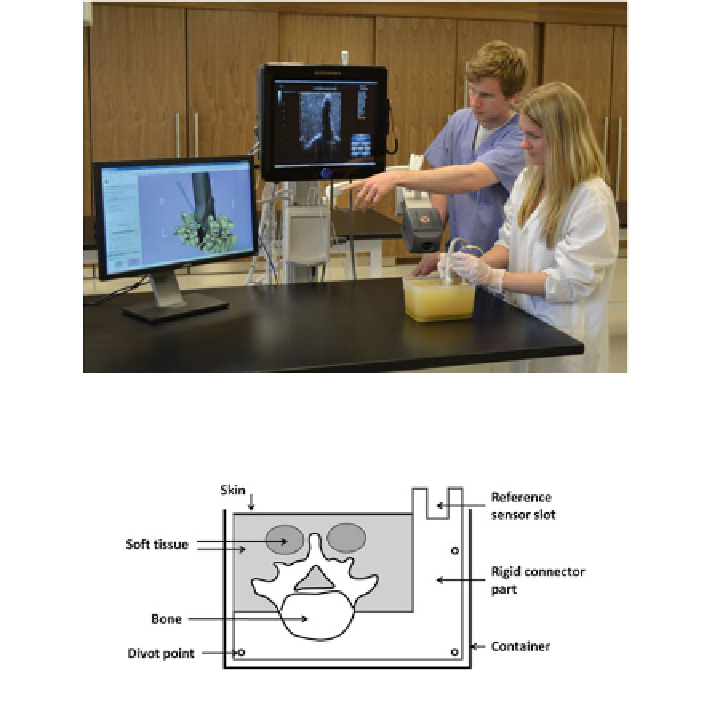Information Technology Reference
In-Depth Information
Fig. 11 A simulator with tracked ultrasound, tracked needle, and registered 3-D anatomical model
for learning spatial coordination in spinal interventions
Fig. 12 Components of an ultrasound-guided spine intervention training phantom
spatial relations of tools and anatomy can be learned with such tracked systems [
11
]
to improve needle coordination skills (Fig.
11
).
The rest of this section gives an overview of how to build augmented reality
training systems using position tracking to develop the skill of mental projection of
the ultrasound image and needle trajectory on the patients in clinical procedures.
Commercial suppliers offer more and more spine simulation training models, but
they can also be prepared from low-cost components (Fig.
12
). A spine model can
be rapid prototyped, or purchased from a supplier. It should be rigidly
xed by a
connecting part to a reference tracking sensor holder, and some divot points should
be marked on this rigid part for landmark registration. The space around the spine
can be filled with organic or soft plastic gel, and the skin can be simulated by a
rubber sheet.
Although there are several commercial and free products for ultrasound-guided
spinal interventions,
finding the best ways to teach and evaluate these skills is still
subject to intensive research. Open-source platforms allow fast setup of research

